Leaderboard
Popular Content
Showing content with the highest reputation on 07/30/22 in all areas
-
6 points
-
Welcome to the club! Sometimes when working under a microscope, it's even harder to tell which direction the parts fly to. So it's important to immobilize springs either with a gloved finger, Rodico or a pegwood stick. I've been at it for four years and still lose a part occasionally. It's the non magnetic parts that are a real pain. Things like plastic, brass, rubies, etc. Eventually you'll become better at it and even learn to fabricate parts yourself. Enjoy!3 points
-
So I decided I wanted to learn how to fix watches, as one does, and after many nights browsing eBay I decided to jump in and buy this beautiful little watch. It wasn't running at all when I got it, and the keyless works were all stuck and it wasn't moving the hands when the crown was pulled out. I disassembled and cleaned everything, and even bought a microscope to try servicing the balance jewels (almost losing a screw or two in the process). The crystal is in very good condition, and the dial is nearly pristine, and cleaned up very nicely with a bit of distilled water and a microfiber swab. After a couple of weekends troubleshooting piece by piece I got everything running, and after lubricating everything it's running well and keeping very good time. The time grapher app I'm using on my PC suggests it's running +/- 5 seconds with around 290 degrees amplitude, but the beat error is pretty bad at around 4 ms. I tried adjusting that too, but when I took the balance off and inspected the hairspring under the scope I noticed a partial fracture of the hairspring collet! I found a donor movement for $12 though, so hopefully it has a good hairspring I can swap in2 points
-
That would mean, if the adjustment is there, move a/the stone/s in that amount, or, if closing the banking/s- it depends on what the situation is in the escapement. But yes, that amplitude is too low. I'm betting on it needing bushings now. I just did a 321 this week, lots of abuse it's seen in the past, but with the original mainspring it hits 270 and drops to 250 at 24h. Didn't need bushings or escapement work, but had a pitted jewel, worn pivot end, other pivot bent, hairspring all out of true. They can be a lot of work but they really run great if all's in order.2 points
-
It should come under ebay,s guarantee. Get in touch with ebay and say it was advertised as working tell them what you have done to try and get a refund. Ebay will sort it out for you. So the stem has a chip in it , more then likely that chip is fouling up the movement and is the main cause for the watch to keep stopping.2 points
-
You didn't say if you took the watch totally apart and inspected all the pieces. The stem shouldn't have anything to do with the watch not running. What does this watch look like? Pictures of the movement would help. Is it a manual wind or automatic? Or, is it a quartz watch? You haven't really given us enough to go on. Does it have a seconds hand? Does the seconds hand move when you pull the stem out? Does it still run when you push it back?2 points
-
In theory you could wind the watch, remove the stem and if everything else is OK, the watch should run. Did you take the watch all the way apart? If what you're calling a "chip" really is a chip and the piece has gotten into the teeth of the wheels, or the hairspring or any other part of the movement - THAT would affect the movement starting and stopping. Let's see what the experts have to say (I'm just a padawan).2 points
-
Might be my second long winded post for today ( apologies if i bore anyone ( tough ). So one of the many problems that crops up when buying cheap watches on ebay is wear to case plating. Often a good movement and dial on a watch can be sidestepped because we dont have a fully workable item. And then its only use is as a donor, thats another vintage watch that bites the dust ( thanks for the quote G ). It is one of the issues that puts us off buying an otherwise good watch. Should that be the case ? ( excuse the pun ) How difficult can it be ? As far as i know, no its not especially hard to do, yet its not that often discussed as a topic. There is some info in the forum archives, but i thought it might be an idea to bring it up again for refreshment, something for beginners to think about and food for thought for others. Maybe its just me i dont know but i think every watch deserves a chance to be brought back to life. Some of these early vintage watches were not cheap in their day, if you owned a nice watch in our grandparents day you had money or you worked bloody hard to get it. So my educated assumptions lead me to believe a lot of these watches were cherished gifts. Sad to see them sold off for peanuts . My empathy side has got the better of me with this one, so I'm wanting to fully restore every watch i pick up and give them back the love that they once received and were used to express. ( Yes i am a fanny, what of it ) . So the tool geek that i am and wanting to do things proper like, i have treat myself to this little number. An electric current outputter ? My next step is to decide on the type of plating to apply. Something hard-wearing, easy to work with , not expensive to buy but provides a reasonable finish and polishes well. Hopefully this little blog encourages others to give it a whirl and save a few old timers in the process. Here is the unit i bought, it was pretty cheap.1 point
-
As a newbie, in every sense of the word, tonight I joined the club by getting on my hands and knees for nearly 60 minutes looking for a part on the floor! I was taking off the day wheel on a Seiko 6119 and the C-clip went flying. For the life of me I don't know why I didn't put a plastic bag over it. It did when I removed the hands, but for whatever reason I didn't do it when I went to remove the C-clip for the day wheel. All I know is that it went flying to the left. I heard it hit something, and it is now lost in the ether! Jules Borel and $4.64 later and I've learned my lesson, at least for tonight. Tomorrow is another day. On a side note I got my stereo microscope in and am LOVING it. My only problem is that the camera for the trinocular port will not focus unless I'm zoomed in nearly all the way. If I zoom back out I cannot get the camera to focus no matter what I do. I know practially nothing about cameras, and basically bought the full microscope and camera setup that were recommended by a few others who run the same setup. Theirs work, my camera doesn't. I'll be trying to find something online that'll explain to me what I'm doing wrong!1 point
-
Re you problem getting the camera to focus, is the camera mounted directly to the camera port on the microscope, if yes they may be your problem, they often need some form of tube between the camera and the camera adaptor on the microscope, depending on the focus point of the camera that tube may only be a few millimetres or 5 to 10 centimetres. is there one still in the camera box that you mistook for just another adaptor. Unscrew the camera set you scope to minimum magnification, set the focus knob to its midway position then raise or lower the whole head until you have a sharp image, that should set the scope for full range use. Then unscrew the camera then holding it by hand move it up and down viewing the image on the screen, it will be washed out because light is getting in, then when you see a sharp image measure how far it is above the camera mount and that will be how long a tube you will need, some are fixed length and some are adjustable, the one on mine was only 5mm and it was hidden in the box, I at first just thought it was part of the lens cap that has to be removed for mounting, so check the box first.1 point
-
Yeah sorry about the gatecrashing G . We sometimes quite unintentionally forget what its about and get carried away with boy banter lol. Just call us the 3 stooges.1 point
-
I had a low amplitude with a completely serviced Citizen. After having red this this article I found the total lock significantly unequal on the entry stone and exit stone. After slightly correcting the appropriate banking pin the watch gained about 20° of amplitude. So - as @nicklesilver said - you should carefully inspect the escapement.1 point
-
Distance from center. That's good coincidence but consider that both mov.ts are the same size. Makers make it the largest possible because that allows the mov.t to be used on a larger watch without looking strange.1 point
-
What's the horizontal amplitude at full wind (minus a few clicks)? It's not uncommon on these to find that the cap jewels have become pitted, which also damages the pivot end. Sometimes you have to turn the jewel just so to see the divot. But your amplitudes in vertical compared to horizontal at 24h look normal, though all are quite low. I see these (and 321) quite regularly. If everything looks right and I'm still getting low amplitude, like 260 at full wind, I tend to have a look at the escapement. A very small adjustment, like 0.005mm, can help a lot. Another common issue on the 861 is worn holes in the bridge and less commonly the mainplate for the barrel. That can rob a lot of power. The solution is bushing the hole/s. You have to check carefully, as the arbor pivot only goes part way through the hole in the bridge- it can look fine from the top but still be very worn. If you google "Archer 861 barrel bushing" you'll see some good info on that from a professional who does a lot of Omega (don't want to link to other forums). A quick thing you can check, which has caught me a few times and I don't have a good explanation for, is residue in the fork slot. Every now and then I got a problem piece in that had everything perfect, and checking that under the microscope showed a white deposit where the roller jewel contact. Removing it with pegwood solved the amplitude issue.1 point
-
I waited several years and serviced 50+ watches before moving on to more complicated movements - alarm watches, then finally chrono. But, if you are confident, and methodical, I don't see why not. (Though I think you would benefit from servicing several simpler models first!) To give you an idea of what's involved, here's the keyless and part of the alarm section of a Bell-Matic -1 point
-
Hello! Very new to this hobby and the same thing happened to me with a very tiny screw. So happy my carpet is light colored. The screw popped out of the tweezers about 10 times. Patience is key and a handy magnet if necessary.1 point
-
I am the same birb. I'm an avid collector. Everything i buy and fix, i keep and wear. You have read my profile name haven't you lol. I have around 120 watches and pocket watches also a few clocks. Many still in need of repair. Have always been a tool geek, my watchroom is my man cave as i love fixing things especially watches. I dont own anything high end, i would much rather have half a dozen different nice mid level watches that ive repaired than own something like a Rolex. My collection mostly consists of vintage Oris , Smiths , Ingersoll, Tissot, Seiko, Bulova, Venus, Junghans and military watches. Then a whole array of other less known.1 point
-
I have a couple of Bell-Matics - a good watch to move on to when you are more proficient with basic movements. A bit "fiddly" if you are just starting out. There are good service guides to help with this movement, when you are ready. Seiko_4006A.pdf1 point
-
Don't forget i'm not trying to get into this as a business, just a hobby. Ideally i would like to be able to buy cool watches for cheap that don't run or need work, fix them up and just wear them. I also want to be able to service my own watches into perpetuity. I'm getting a free working bell matic that works but probably hasn't been serviced in 20 years. Not at the level yet where i want to tackle that but that's a perfect case of why i want to do this. Neat little oddities and bits of history like that that deserve to run again.1 point
-
Sometimes grub screws are secured in place with a second grub screw on top. Double check that there isn't another in there. It's ok to hit the spindle with a soft face hammer; one (or a few) smart smacks are better than a lot of little light taps. M8 is 1.25 pitch; 8mm with 1.5mm pitch is a special (but it exists). I wonder if, as Boley based this on the Webster Whitcomb design, they actually used an inch thread? 5/16" is darn close to 8mm, and it has a pitch of 1.41mm. Or if it is 8mm/1.5mm pitch the nuts you have on hand won't fit for sure, unless you happen to have actual 8mm/1.5 nuts. It wouldn't be a crime to get the threaded rod out (they can be really really tight, but they do unscrew) and retap the bed for M8. The thread will look funky but will still work fine. Then you can use a standard threaded component to attach.1 point
-
Morning UK, and hello to the rest of the world. I hope you are all well. Today i have a nice swiss piece, er watch that is . This is a Huntana ( cool name ) not running as yet but will probably be my next project. Inside is a Unitas 6325, as you will notice from the photos it has a hairspring issue ( just a bit lol ) but hopefully my superhuman skills can straighten this out. Besides this the watch has more to worry about than a dodgy mangled hairspring as you will see in the last photo lol. This is a bit beyond me and more in line with a visit to the doctor and a course of antibiotics. As a precaution during its repair i will be keeping my mouth firmly closed ( yeah yeah hard to believe " Whaatevvaaa " ). And I will not be wearing my usual # going commando # style of attire. Yes Gert and Richard you know what I'm talking about. And no Richard i wont be using 20x mag on my scope, bigboy needs wide-angle lens just to fit it all in1 point
-
Thanks. I'm looking forward to learning more. I've been a part-time gunsmith for some years now, so I've made some small parts before. Sears, springs, detents, etc. Watchmaking is taking the small parts game to another level! I'm hoping that some of my previous experience will serve me well when I finally get to that point.1 point
-
Unfortunately all too common on pocket watches in which case it's best to leave it alone. As you're new here just a reminder swapping hairsprings usually leads to timing issues. Typically on modern watches you cannot swap the hairspring as each hairspring is vibrated to that exact balance wheel. In the case of the Elgin watch You can swap the hairspring but You will have to match the balance wheel to the hairspring. In other words there will be some timing adjustment issues. I would try to swap the entire balance wheel and who knows you might be lucky and it might just swap but probably won't. Your PC is suggesting excellent timing wonderful amplitude and why do we care about the beat now? Of course there is the problem of how does the watch really run over 24 hours versus the timing. Plus I assume you looked at the timing and more than one position? But it's back to is it worth trying to fix the beat error?1 point
-
I'd like to see this thread wrapped up. The three of you should take your continuing humor private - this thread started life with a real issue and now it just keeps flopping around on the beach. Perhaps @jdm, @oldhippy or @Mark would please go ahead and lock it? Thanks.1 point
-
Movements in themselves do not have a set date or crown position. They are simply rotated in the case so that the crown goes anywhere is desired. The only part that changes is the date and day (if used) rings printed for the desired position, and a dial which is has the window cut to match.1 point
-
I had accumulated a few pocket watch movements for pocket money prices recently, so over the last couple of evenings I've been sorting out the good from the bad and the ugly. Four runners, plus one in need of a mainspring, and one with a broken balance, which donated its spring to the needy one. There are a couple more that I'll perhaps look at later in the week.1 point
-
So i tried the prototype Zero was kind enough to send my way and i have to say it's better for vintage springs. Alas my spring broke but i think that was due to it being very old not the winder. I still can't say if the walls would have been strong enough but I think it's worth including this small version along with the main files. Its definitely helpful. Next spring i come across i'll try again should not be long. David1 point
-
1 point
-
The industry standard is the Bergeon 4040. It's not very expensive, and does an excellent job.1 point
-
There is a setting procedure for the chronograph hands only, which is explained on both the service manual that you have attached, and the user manual. But, the OP has the time function not working at all, and this is something that is supposed to be working as soon the battery is connected. There is no reset function, and setting the time is, of course, normally done with the crown.1 point
-
Usually for in a complicated watch there is a setting procedure to get everything lined up again. In other words you can't just drop the battery and expect the watch to work and everything to be fine you have to follow the reset and setting procedure. I've attached the service manual the setting procedures are in the back of the manual. 572429687_289_ETA251.252251.262251.272.pdf1 point
-
Quartz chronos use a separate motor and coil for each sub-hand, so it can be that only time is jammed or faulty. You can try using a line-free box or demagnetizer to give it a little pulse, failing that the problem becomes more difficult and specialized to diagnose and repair, with most repairers replacing the module complete.1 point
-
Some of my recent repairs to non-runners that are now happy again. 1963 Mercury - water ingress damaged the dial so I cleaned it up and coated with a Sharpie. 1968 Marlin - found the date detent spring was curved and causing the day of the month not to align in the dial window. 1970 Marlin - this was missing the case back, movement spacer and the hair spring was bent. It was also very dusty inside since the case was exposed. I replaced the balance wheel assembly form a M31 automatic. Have to love the interchange parts Timex used! All were cleaned, polished, movements serviced as outlined in the Timex Service Manual.1 point





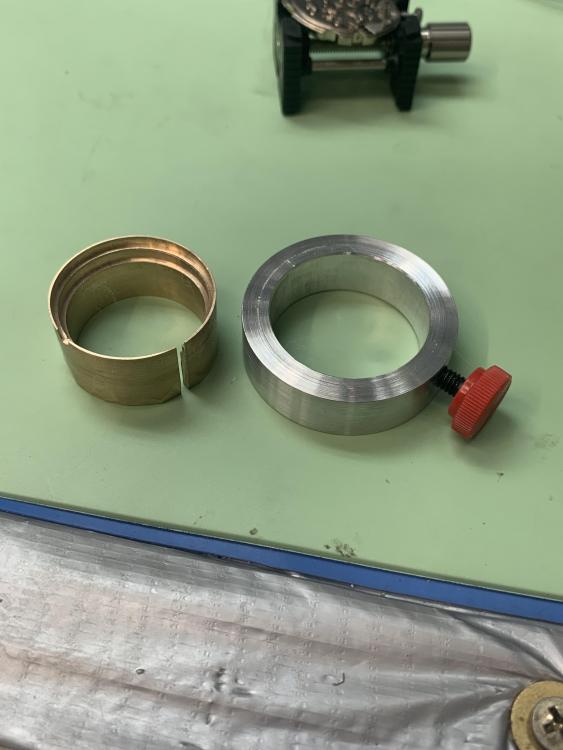
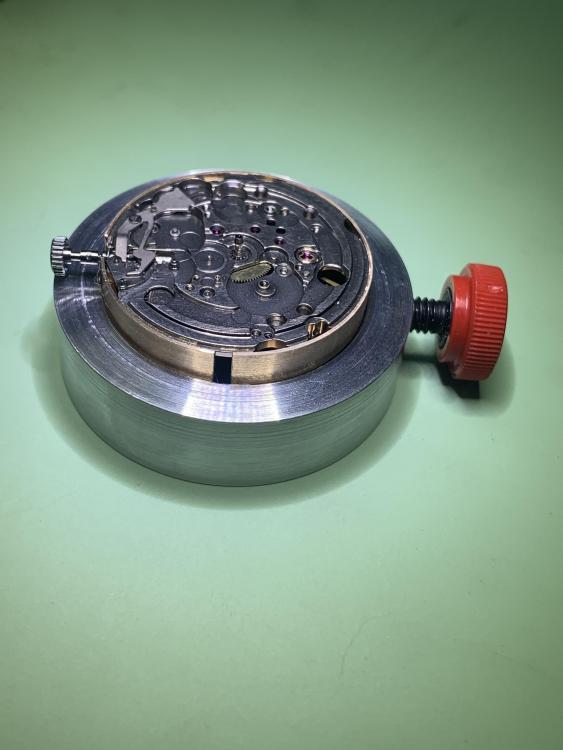
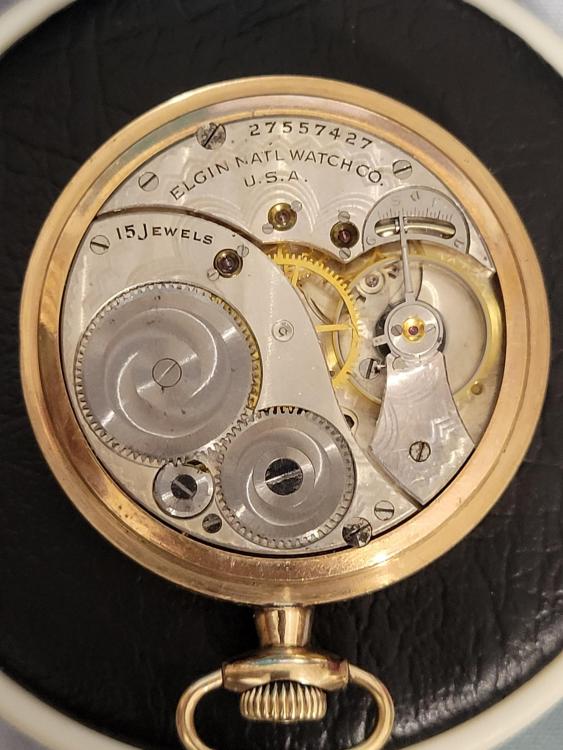
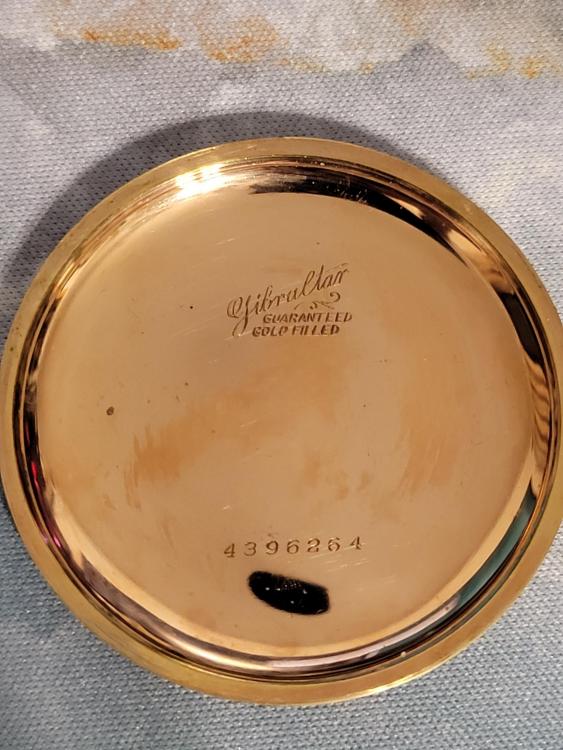



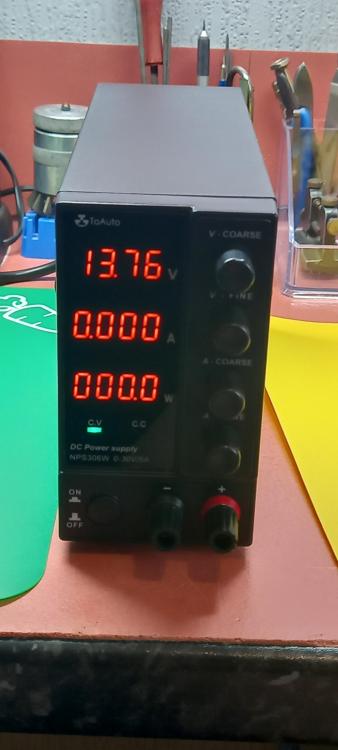



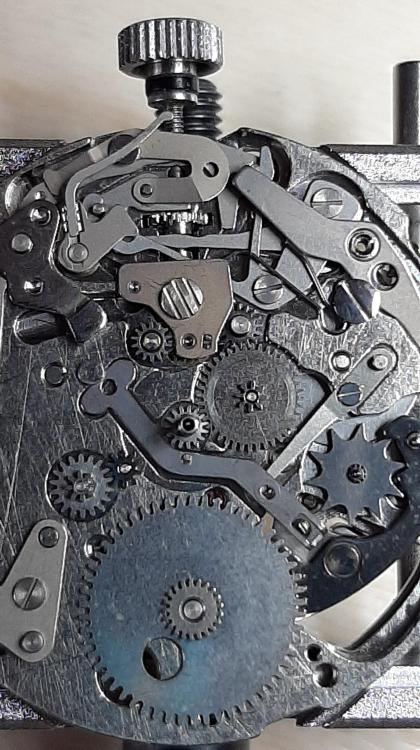

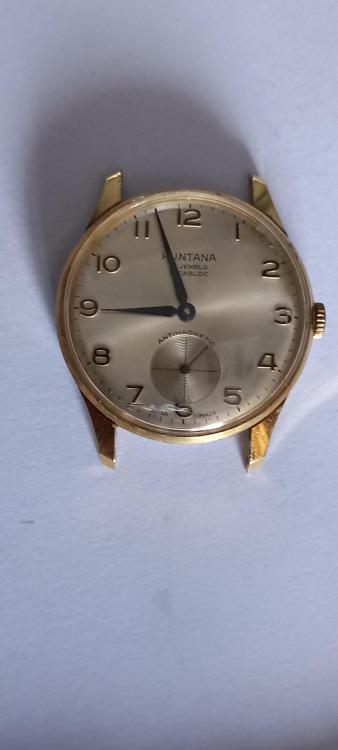
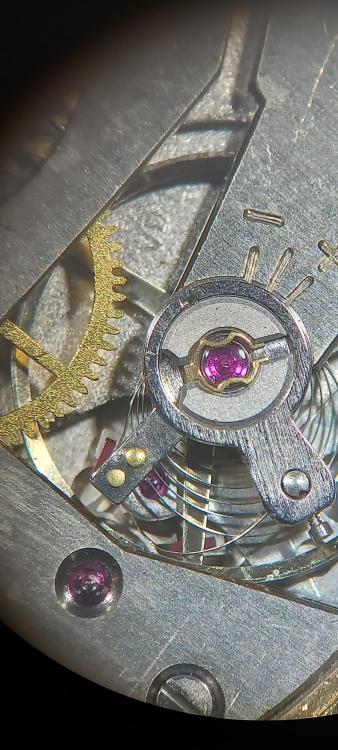
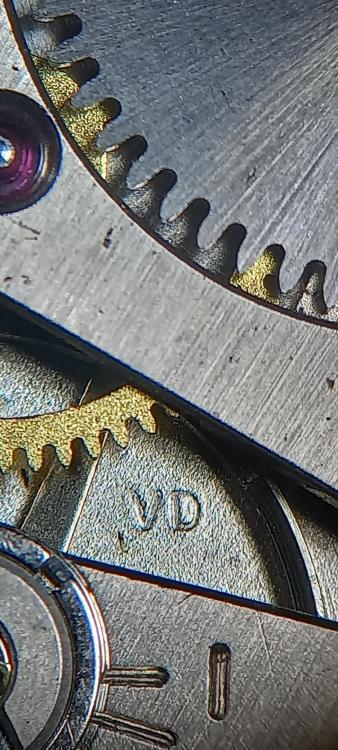

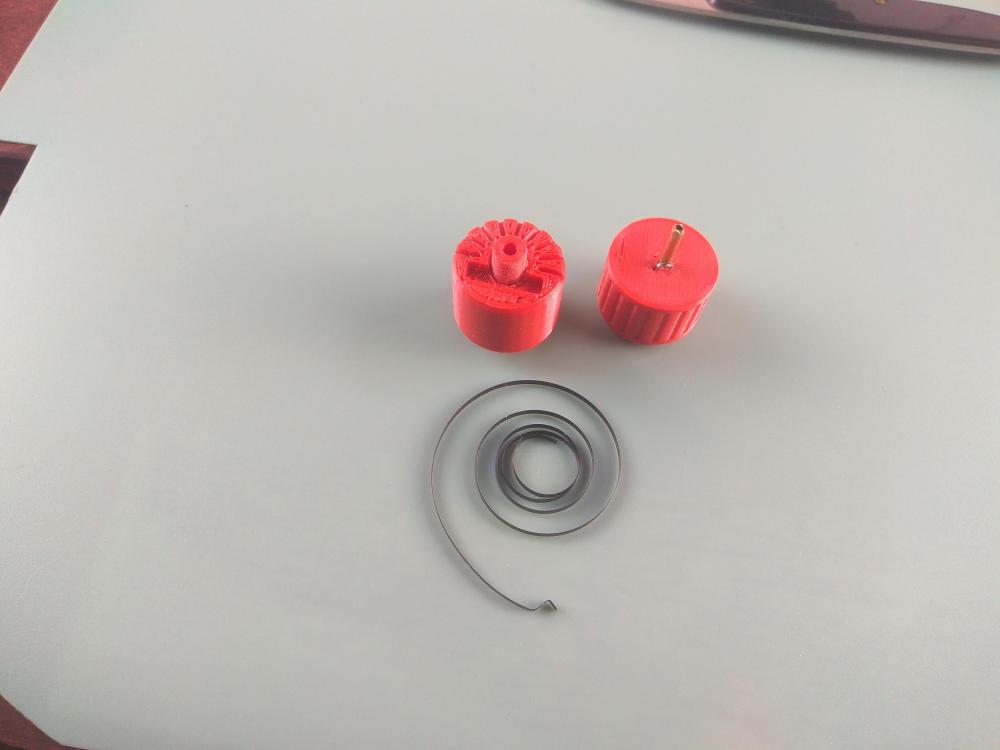

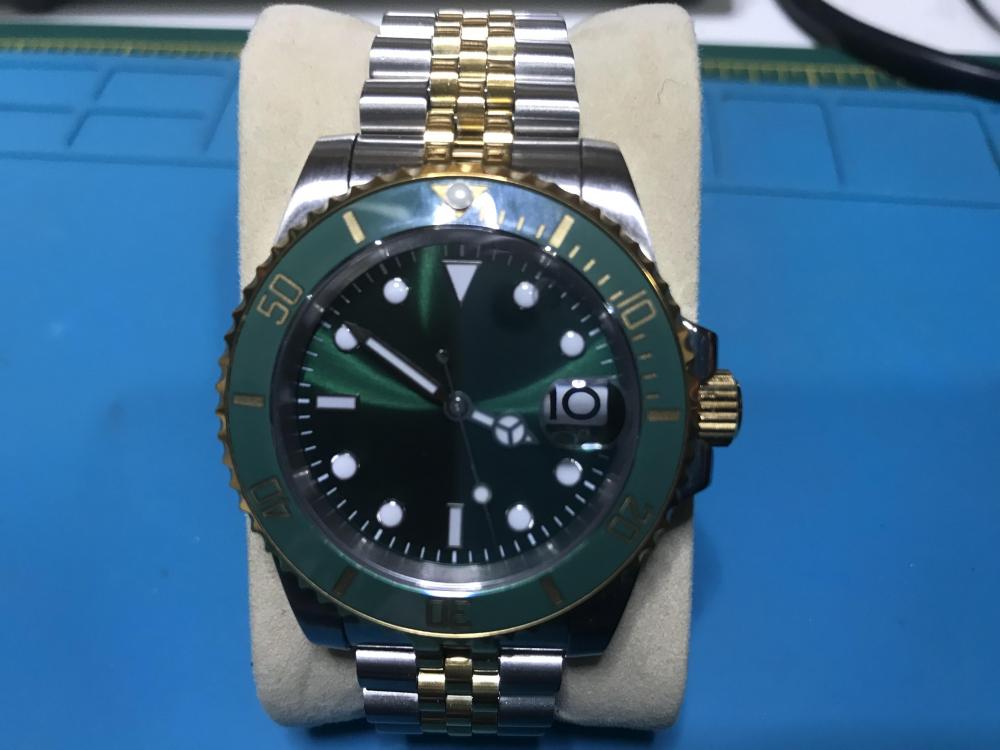

.thumb.jpg.5ad3e5e717bc1b79964a37b486ff6973.jpg)